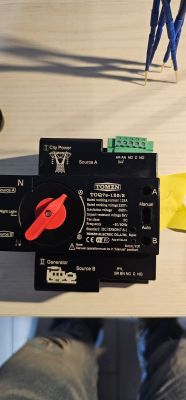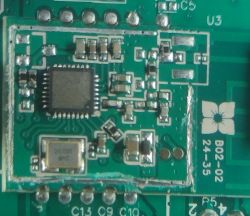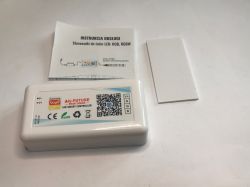 .
.
Here's another LED lighting controller offering control via WiFi. This time I'm also changing its firmware at the request of a reader - I'm reprogramming the WiFi module so that this controller can be connected to Home Assistant and controlled locally without the cloud.
The controller shown here is commercially available under the name EC79901 and is designed for RGB tapes, but after changing the firmware, it can also control three separate single-colour tapes or CW tape (shades of white). It's all up to us.
ADVERTISEMENT
So let's start with the kit's markings and contents. The manufacturer promises 12-24V DC operation at up to 15A.
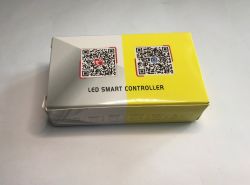
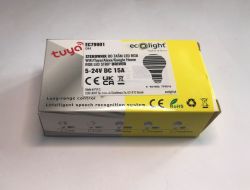 .
.
A double-sided adhesive strip for mounting the controller is included.
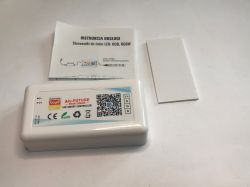
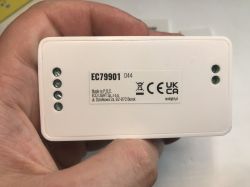 .
.
The manual is in Polish and English:
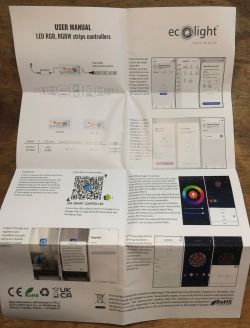
 .
.
Pairing with Tuya I skip. Time to change the batch.
The case is snap-on, it's easy to look inside.
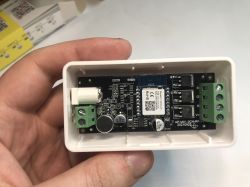
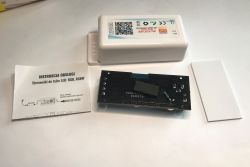 .
.
The first thing that caught my eye was that through-hole resistor - could it be some quick fixes at the factory?
 .
.
The construction of the controller is fairly typical. Inside we have a step-down inverter converting these 12V inputs to 3.3V for the WiFi module. I can also see a microphone nearby.
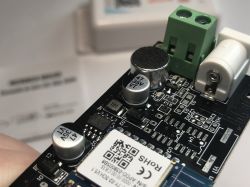
 .
.
The inverter used here is the XL1509 3.3 - as the name suggests, 3.3V:
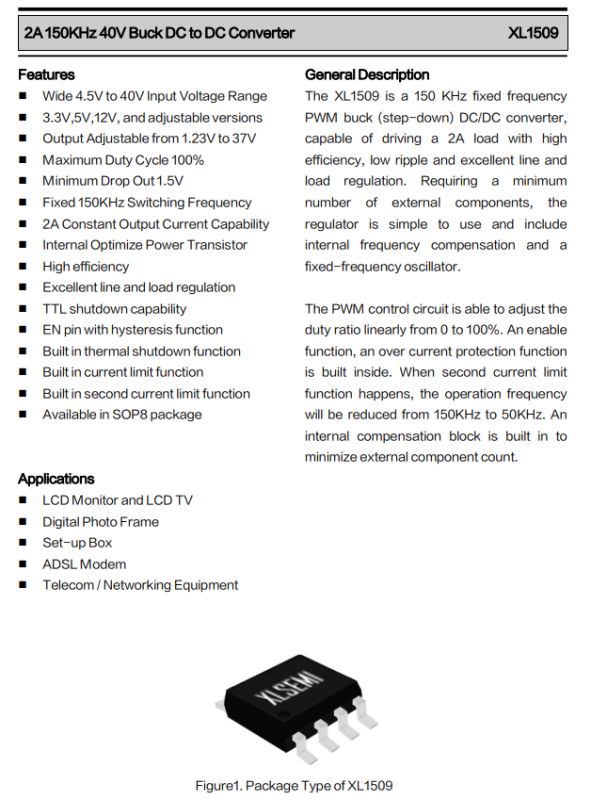 .
.
The WiFi module itself is CB3S - you can upload a Polish OpenBeken .
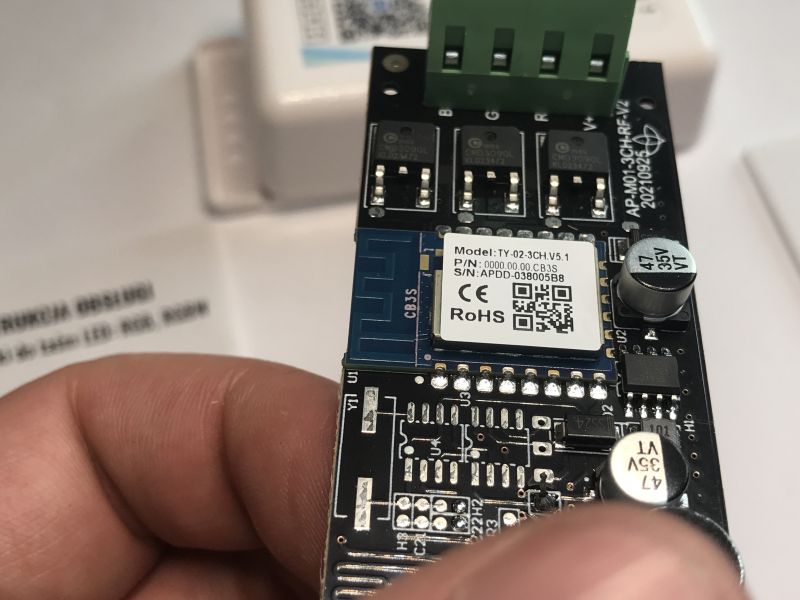 .
.
PCB designation: AP-M01-3CH-RF-V2 20210925 This RF stands for radio communication, which is not implemented here - the PCB lacks radio components.
The transistors remain:
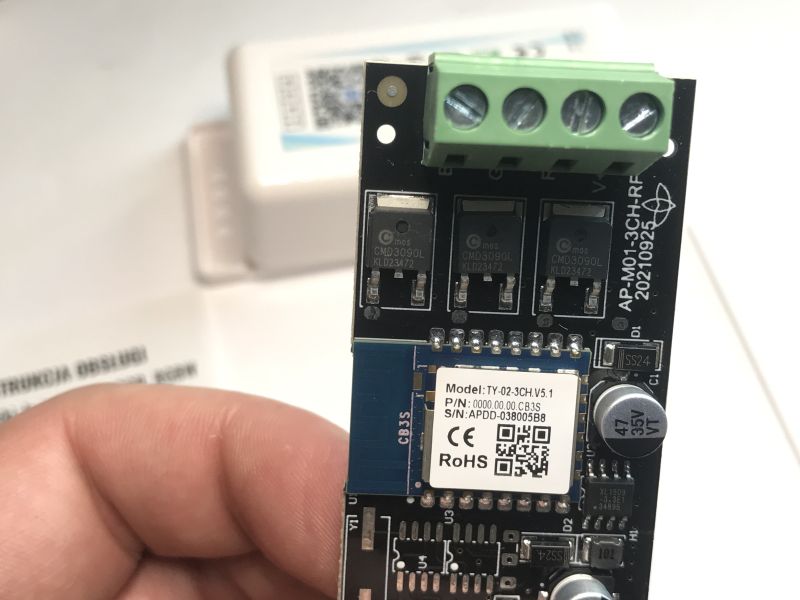 .
.
CMD3090L, controlled directly from the GPIO:
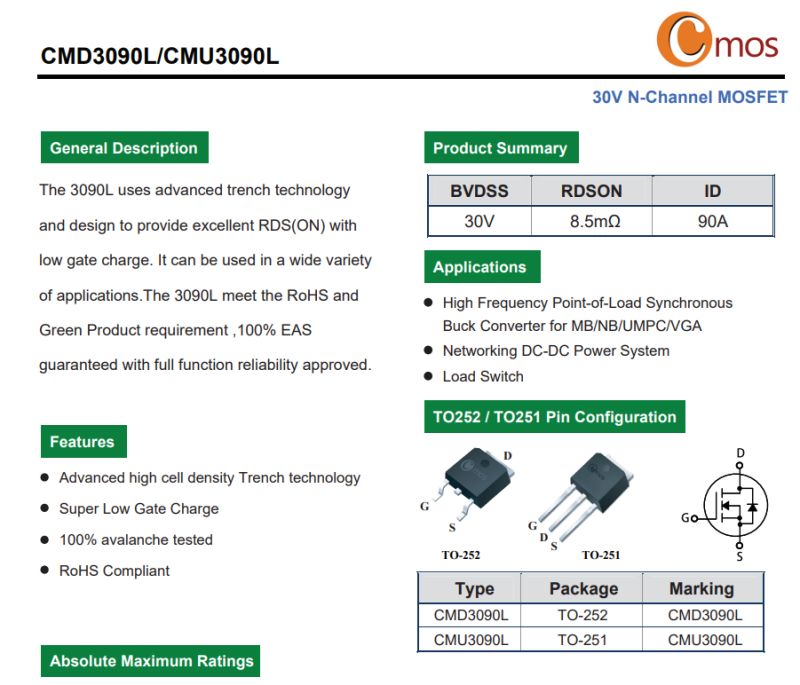 .
.
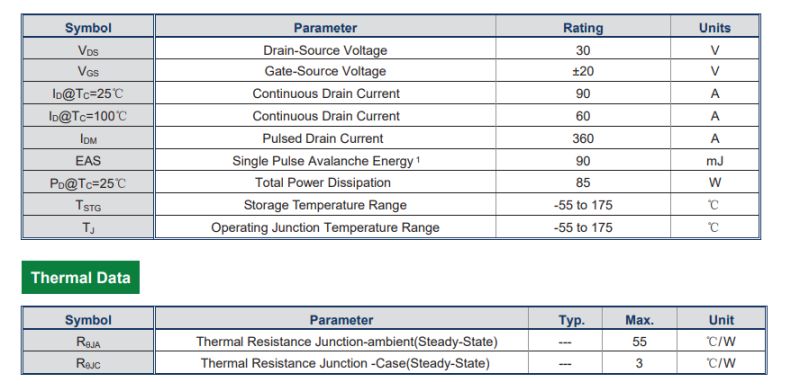 .
.
These are indeed better transistors than what I usually find in such products. The drain current is also large and the resistance in the open state is small.
Now it's time to change the firmware .
According to our flasher's instructions, all you need is a USB to UART converter:
https://github.com/openshwprojects/BK7231GUIFlashTool
I took the 3.3V from the LDO on my board, although you could just as well feed from the input from the LED strip.

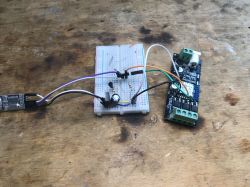 .
.
Flasher has correctly detected the configurations:
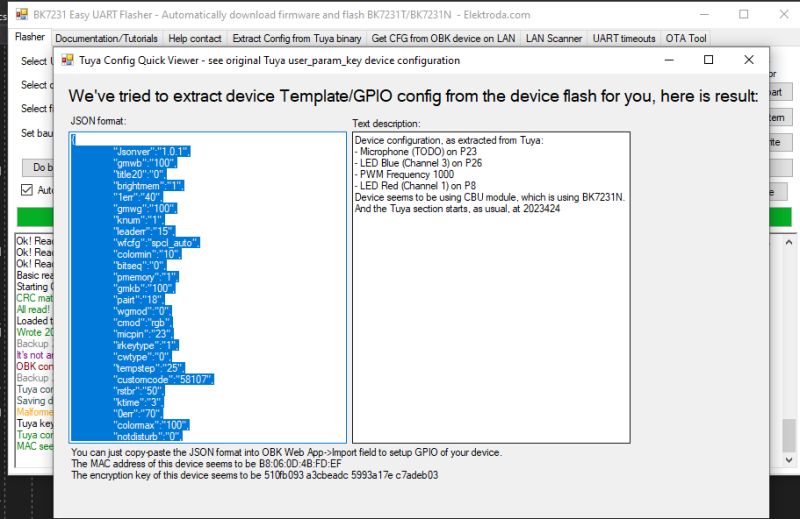 .
.
Verbal description:
Device configuration, as extracted from Tuya:
- Microphone (TODO) on P23
- LED Blue (Channel 3) on P26
- LED Green (Channel 2) on P24
- PWM Frequency 1000
- LED Red (Channel 1) on P8
Device seems to be using CBU module, which is using BK7231N.
And the Tuya section starts, as usual, at 2023424
It is also interesting to note that according to the JSON from Tuya, this module identifies itself as a CBU:
Code: JSON
OBK template:
Code: JSON
From now on, you can control the device locally and connect it to the Home Assistant:
In summary , this was another easily reprogrammable device from China. This time, however, I don't think the rework is complete, as the pushbutton is still missing - fortunately it can be soldered to any free GPIO and OpenBeken will take care of the rest. The pull up resistor is programmable on the CB3S, so just a microswitch between ground and the selected pin is enough and you can already control the device physically too, without WiFi.
Something similar was shown here: https://www.youtube.com/watch?v=KU0tDwtjfjw
That's it for today, but which LED strip controllers do you guys use? Would you choose to use a controller as the manufacturer gave it here, i.e. without a button on the housing, fully controlled only by WiFi?
Cool? Ranking DIY Helpful post? Buy me a coffee.




